The famous “Perseid meteor shower” peaks this coming weekend! In this article we’ll discuss what a meteor shower is, the mythology behind the “Perseids,” how to view the shooting stars, and when to view them.
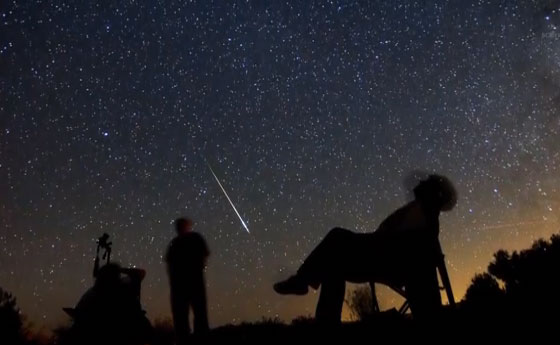
The famous “Perseid meteor shower” peaks this coming weekend! In this article we’ll discuss what a meteor shower is, the mythology behind the “Perseids,” how to view the shooting stars, and when to view them.

On Sunday, May 7 you can use the Moon to find the planet Jupiter!
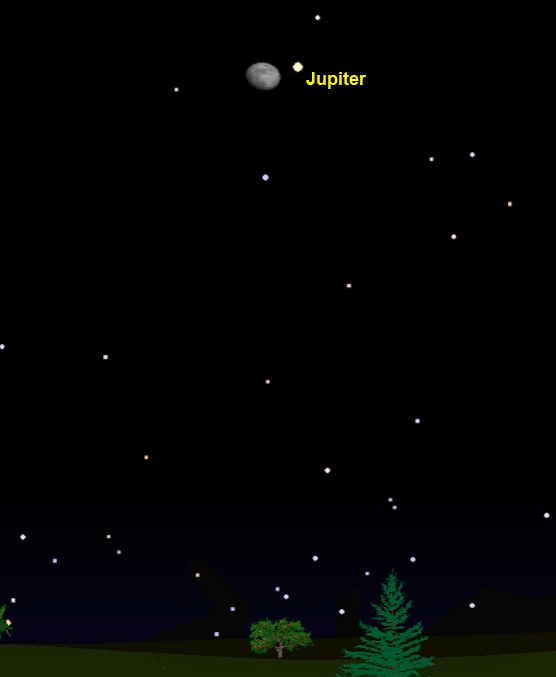
Through a telescope you may see up to four of Jupiter’s largest moons.
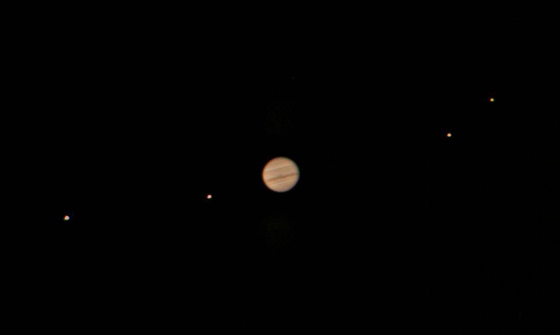
Furthermore, if you have a good telescope, you may make out some of the prominent horizontal cloud bands across the surface of the King of the Planets. You may also see up to four of Jupiter’s largest moons — the “Galilean satellites” — named after Galileo Galilei, who discovered them in 1610. These four moons move very quickly around the planet. In fact, if you observe them shortly after it gets dark, be sure to draw a diagram of where the moons are in relation to Jupiter. Then, observe the moons again a few hours later: If you do, you’ll notice the moons have moved significantly between your two observing sessions.
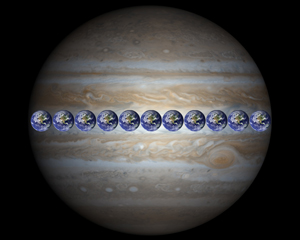
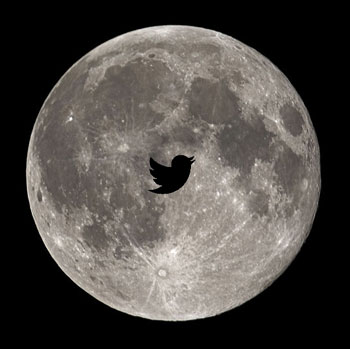
Our Moon Tweets let you know when the Moon is in a Name A Star Live constellation.
Did you know you can use the Moon to identify where your star’s constellation is in the night sky? Follow us on Twitter where we let you know when the Moon appears in a Name A Star constellation (area of the night sky).
Name A Star Live offers some really good tools to learn about the night sky and find your star’s constellation. Visit our website to learn about our Virtual Planetarium software and planisphere constellation finder!
You may see a star disappear behind the Moon the night of December 12/13! Over that night the Moon will pass in front of a very bright star in the Name A Star Live constellation Taurus.
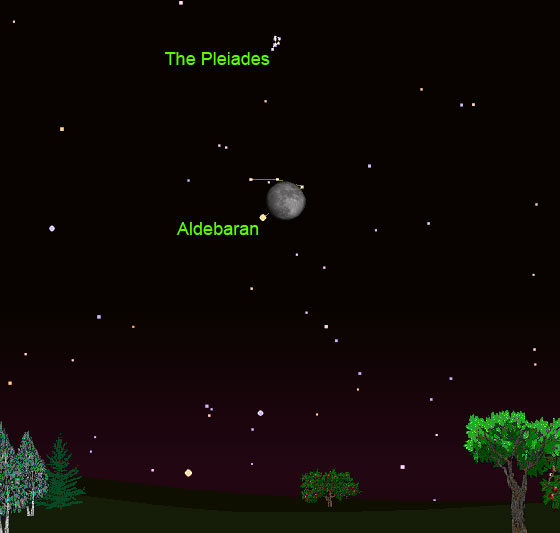
Those of you in the eastern, central and mountain time zones of North America should see the star, called “Aldebaran,” disappear behind the Moon sometime during the first 1-3 hours after sunset. After sunset, look for the Moon over the eastern horizon. Aldebaran will be just to the left of the Moon. Then, over the course of the next few hours, the Moon will move closer and closer until it covers the star. Unfortunately, this celestial show won’t be visible in the Pacific time zone, or in the southern hemisphere.
Those of you in Europe will need to wake up early in the morning to see Aldebaran disappear. Look for the Moon and Aldebaran over your western horizon. If you’re in London, look especially during the 3-4 am time period. If you’re in Berlin, Paris or Rome, look between 4 and 5 am.
Aldebaran is a red giant star that’s called the fiery eye of Taurus the Bull. The name Aldebaran comes from the Arabic and means “The Follower,” because the star appears to follow the Pleiades star cluster throughout the course of any given night. (BTW, people often confuse the Pleiades with the Little Dipper: The Little Dipper is found over the norther horizon.) Aldebaran is the brightest star in Taurus, and is part of a prominent, V-shaped group of stars called the “Hyades.”
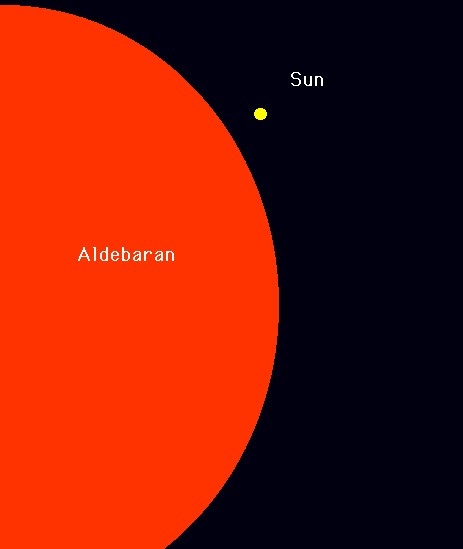
Aldebaran is about 65 light-years away, meaning that the light you see from Aldebaran this month was generated in 1951. That’s how long it took the light to reach us.

Did you know you can use the Moon to identify where your star’s constellation is in the night sky? Follow us on Twitter where we let you know when the Moon appears in a Name A Star constellation (area of the night sky).
Name A Star Live offers some really good tools to learn about the night sky and find your star’s constellation. Visit our website to learn about our Virtual Planetarium software, planisphere constellation finder, and First Light Astronomy Kit!
Did you see the Super Moon this month? It was the largest full Moon we’ve seen since 1948, and we won’t see another one this large until 2034. But in case you missed the Super Moon, here are some really neat images!
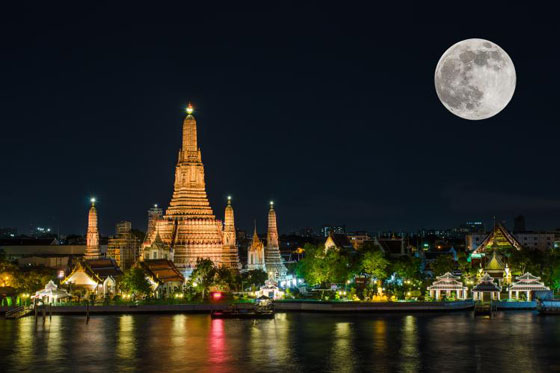
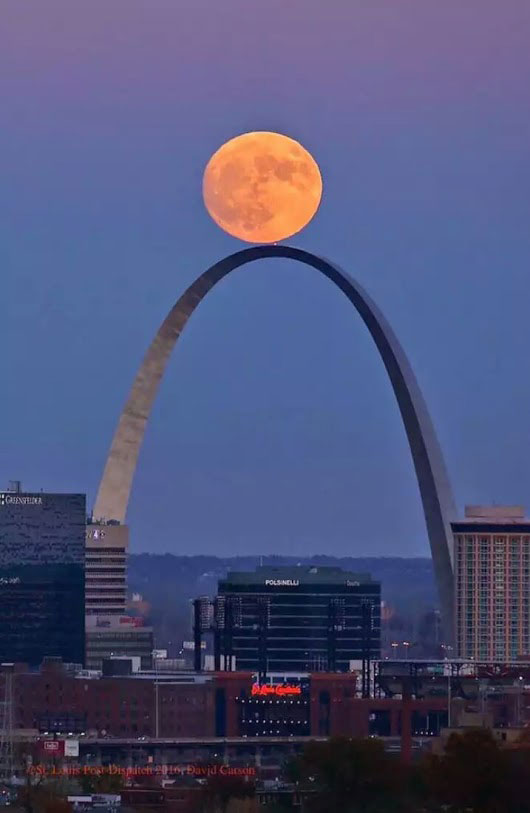
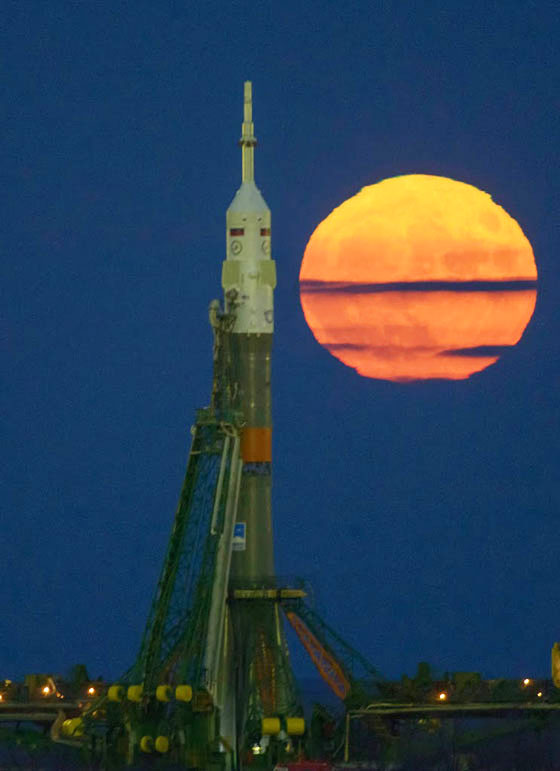
Finally, here is a video showing many images of the Super Moon from around the world!

Did you know you can use the Moon to identify where your star’s constellation is in the night sky? Follow us on Twitter where we let you know when the Moon appears in a Name A Star constellation (area of the night sky).
Name A Star Live offers some really good tools to learn about the night sky and find your star’s constellation. Visit our website to learn about our Virtual Planetarium software, planisphere constellation finder, and First Light Astronomy Kit!
The Moon is a very useful ‘landmark’ in the sky to find planets, prominent stars and other interesting things in the heavens above. You can use the Moon in early November to find the planet Mars.
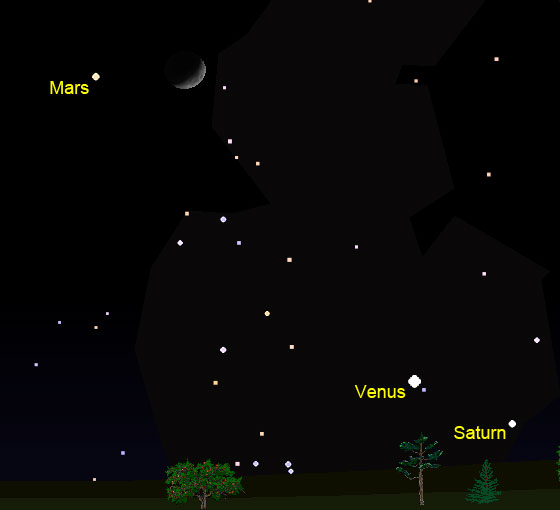
On November 5 look for Mars, which will appear reddish in color, just to the east of the crescent Moon. Both of these celestial objects are in the Name A Star Live constellation Sagittarius this evening. You should also see Venus and Saturn very low on the southwestern horizon.
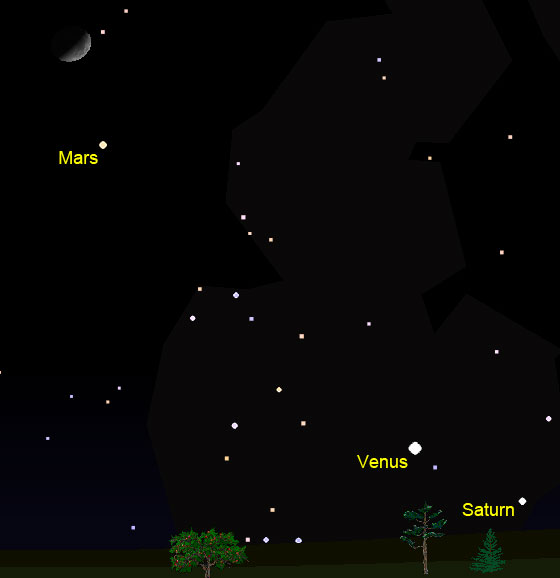
The next night, November 6, the Moon moves into Capricorn to a position above Mars, which remains in Sagittarius.
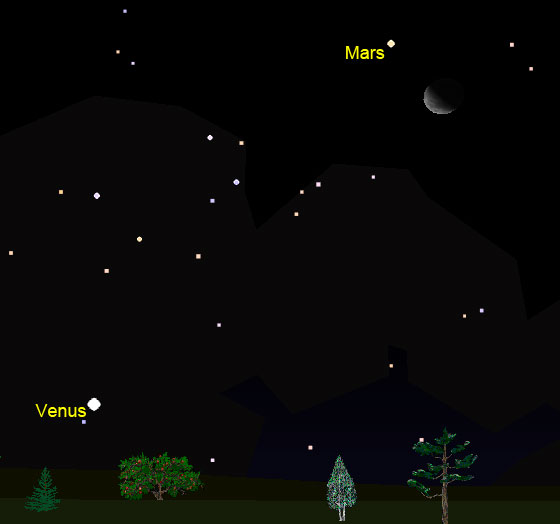
If you’re in the southern hemisphere of Earth, look for the Moon and Mars over your western horizon the evening of November 6. The Moon and Mars will both be in the Name A Star Live constellation Sagittarius as viewed from the southern hemisphere.

Did you know you can use the Moon to identify where your star’s constellation is in the night sky? Follow us on Twitter where we let you know when the Moon appears in a Name A Star constellation (area of the night sky).
Name A Star Live offers some really good tools to learn about the night sky and find your star’s constellation. Visit our website to learn about our Virtual Planetarium software, planisphere constellation finder, and First Light Astronomy Kit!
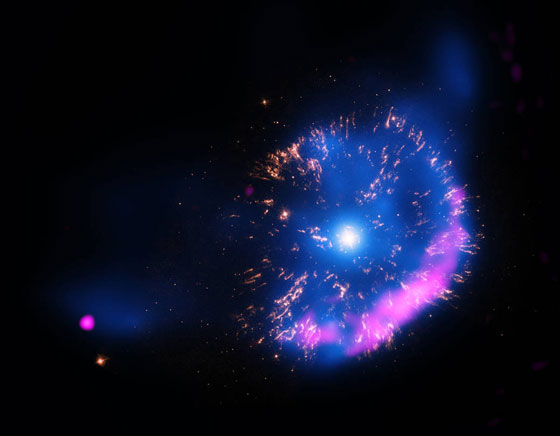
A star in the Name A Star Live constellation Sagittarius has exploded, and you can see it now! But you better hurry as Sagittarius will soon not be visible to observers in the northern hemisphere of Earth.
The star, which has not been ‘named’ by Name A Star Live, is actually a binary star where one of the stars has stolen hydrogen from its companion. The hydrogen built up on the surface of the stellar thief and, under pressure, ignited like a hydrogen bomb. The exploded hydrogen is given off as a shell of gas that surrounds the star. (See photo above.) The star remains intact, and will likely repeat the process of sucking hydrogen from its companion until another explosion (nova) occurs in the future. When you see the nova you will see the exploded shell — although what you will see through your binoculars or telescope won’t look like the spectacular NASA photo above!
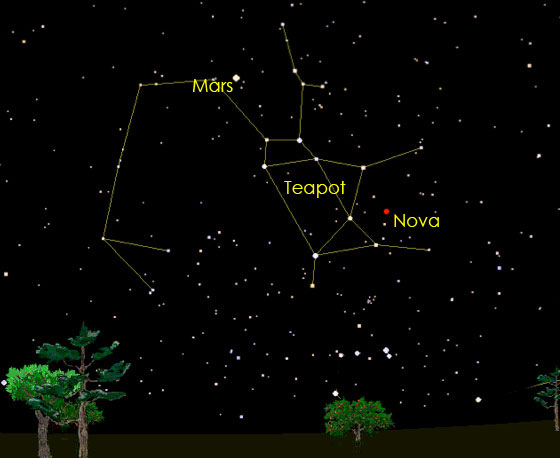
You should be able to see the nova with a 50mm pair of binoculars or just about any telescope. Just look for Sagittarius toward the southwest about 1 1/2 hours after sunset. You’ll notice the bright planet Mars. Just below and to the right of Mars you’ll see a group of relatively bright stars called the “Teapot.” The nova will be just to the right of the Teapot.
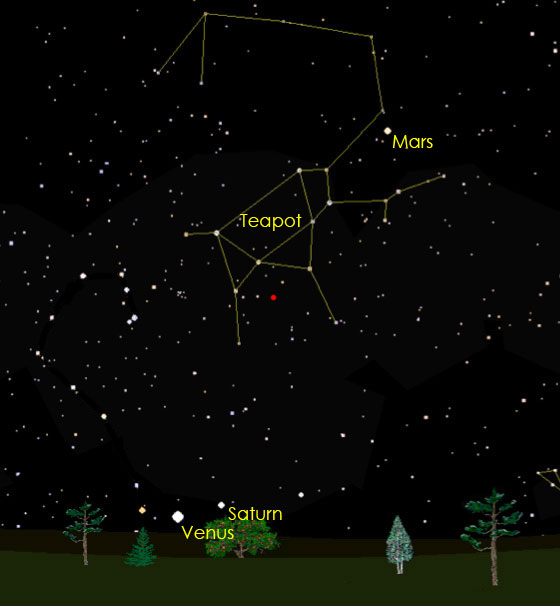
Those of you in the southern hemisphere can also get a good look at the nova. Sagittarius will be somewhat higher in your sky after sunset compared to observers in the northern hemisphere.
Finally, don’t confuse a nova with a “supernova.” Classical novas can be considered to be “miniature” versions of supernova explosions. Supernovas signal the destruction of an entire star and can be so bright that they outshine the whole galaxy where they are found.
For more information about novas, see chandra.si.edu/photo/2015/gkper/

Did you know you can use the Moon to identify where your star’s constellation is in the night sky? Follow us on Twitter where we let you know when the Moon appears in a Name A Star constellation (area of the night sky).
Name A Star Live offers some really good tools to learn about the night sky and find your star’s constellation. Visit our website to learn about our Virtual Planetarium software, planisphere constellation finder, and First Light Astronomy Kit!
Follow us on Facebook, Twitter and Pinterest!
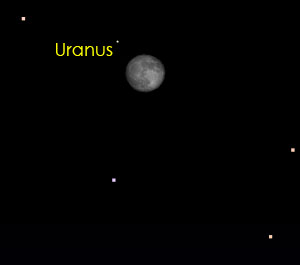
On October 15 the planet Uranus will reach its maximum brightness for 2016. But even if you can’t observe the 7th planet from the Sun that night, you can get a good look all month. So pull out your telescope or binoculars and take a peek! Uranus will be relatively easy to spot October 15 as it will appear next to the Moon as a fairly dim ‘star.’ If you can’t view Uranus on the 15th you can use our Virtual Planetarium astronomy software to find it on other nights this year. This gas giant is in the Name A Star Live constellation Pisces.
Through a telescope Uranus will appear as either a grey circle or a faint blue-green dot, depending on whether you have a small or large telescope, respectively. The planet is so far away that the light you’ll see through your telescope or binoculars will take four hours to reach you. That translates into a distance between Earth and Uranus of 2.7 billion miles, or 4.4 billion kilometers.
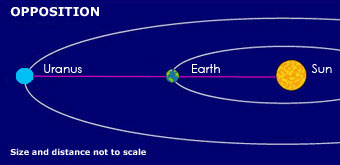
On October 15 the planet will be at “opposition,” meaning that, as the sun sets in the west that evening, the planet will rise in the east — on the opposite side of the sky as the Sun. That’s because at that time Earth will be directly between Uranus and the Sun.
Uranus has 27 known moons, including its famous five large moons, which were discovered before the space age. The remaining 22 were discovered by Voyager 2 and the Hubble Space Telescope. While most of the satellites orbiting other planets take their names from Greek mythology, Uranus’ moons are unique in being named for Shakespearean characters, along with a couple of the moons being named for characters from the works of Alexander Pope.
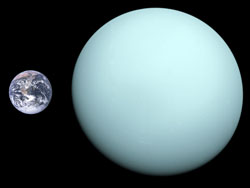
The planet was discovered in 1781 by the British astronomer William Herschel, who initially thought the planet was a comet. Once he realized what he had actually discovered, Herschel wanted to name the planet “Georgium Sidus” (George’s Star), after King George III. But astronomers decided instead to name the planet after the Greek god Uranus, the husband of Gaia — Mother Earth.
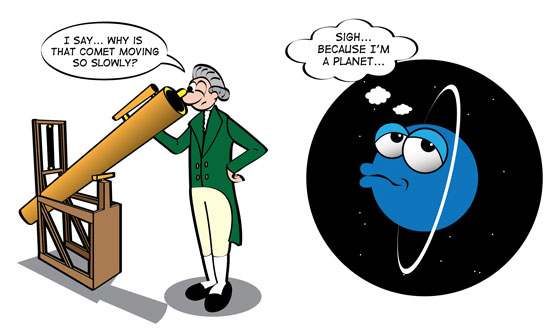

Did you know you can use the Moon to identify where your star’s constellation is in the night sky? Follow us on Twitter where we let you know when the Moon appears in a Name A Star constellation (area of the night sky).
Name A Star Live offers some really good tools to learn about the night sky and find your star’s constellation. Visit our website to learn about our Virtual Planetarium software, planisphere constellation finder, and First Light Astronomy Kit!
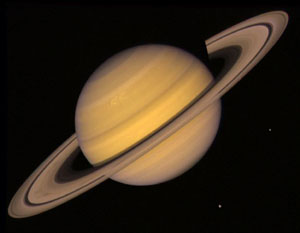 You can see some really neat things in the night sky this October: planets, shooting stars, and some rare, eery morning light called the “False Dawn”! You can use the Moon to find many of the interesting sights overhead this month, including Saturn. In fact, Saturn is getting lower and lower in the sky, and October will be the last chance to get a good view of Saturn in 2016.
You can see some really neat things in the night sky this October: planets, shooting stars, and some rare, eery morning light called the “False Dawn”! You can use the Moon to find many of the interesting sights overhead this month, including Saturn. In fact, Saturn is getting lower and lower in the sky, and October will be the last chance to get a good view of Saturn in 2016.
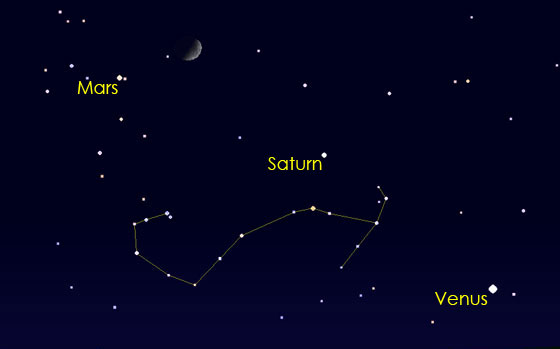
October 3 — Look for Venus near the thin, crescent Moon over your western horizon near sunset. Venus will be the brightest point of light low on the horizon, near the Moon.
October 5 & 6 — The Moon will appear near the beautiful, ringed planet Saturn, which will be hovering near the constellation Scorpius.
October 7 & 8 — The Moon will appear near the red planet Mars.
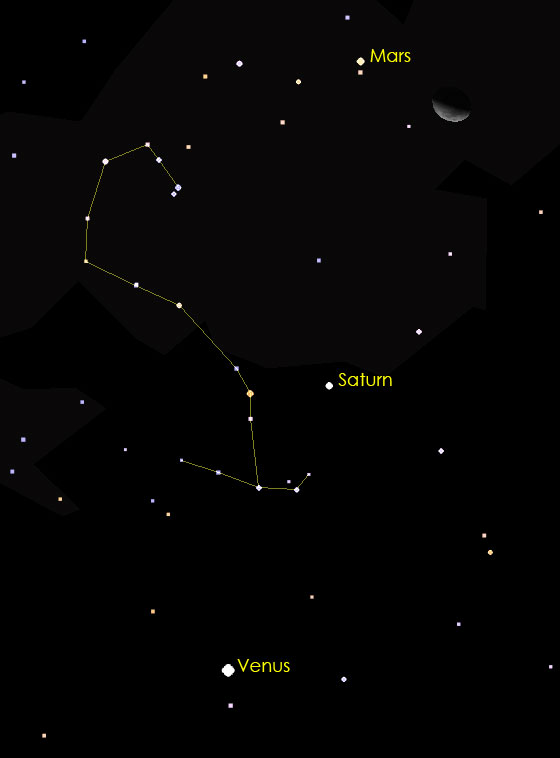

On October 15 the planet Uranus will reach its maximum brightness for the year. So pull out your telescope and take a peek! Uranus will be easy to spot as it will appear next to the Moon that night. Through a telescope it will appear as either a grey circle or a faint green dot, depending on whether you have a small or large telescope, respectively.
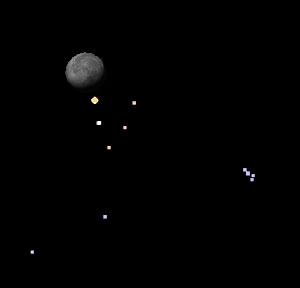
If you’re an early bird, you can use the Moon in the pre-dawn skies to see a couple of beautiful sites in October. On October 19 the Moon will be near the “Hyades” star cluster, which is a V-shaped group of stars in the constellation Taurus. Nearby is another cluster of stars known as the “Pleiades.” Many people confuse the Pleiades with the Little Dipper, which is actually located over the northern horizon. And on October 28, the thin, crescent Moon will appear near Jupiter, the king of the planets, in the east near sunrise.

The Orionid meteor shower peaks before dawn on October 21, although you can see its shooting stars from October 2 through November 7. To get the best view, lie down outside with the Moon at your back in the pre-dawn hours. It’s called the “Orionid meteor shower” (a.k.a., “the Orionids”) because the shooting stars all appear to fly out of the constellation Orion. The meteors are leftover dust particles from the many visits of Halley’s Comet every 75 years to our neck of the solar system. Each October, as Earth passes through the dust trail left behind by Halley’s Comet, the meteors burn up in the atmosphere as “shooting stars.” Actually, Halley’s Comet is responsible for two meteor showers each year: the Orionid meteor shower each fall and the “Eta Aquarid” meteor shower each spring.
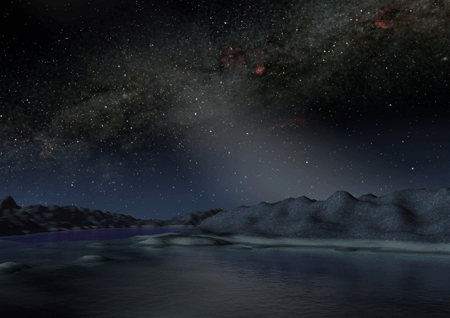
If you live far from city lights, consider waking up early sometime in the first half of October and look for the “False Dawn” — a beautiful, triangle-shaped glow of cosmic light that appears in the eastern sky before sunrise. See our blog article about “Fall’s False Dawn” for details.

Did you know you can use the Moon to identify where your star’s constellation is in the night sky? Follow us on Twitter where we let you know when the Moon appears in a Name A Star constellation (area of the night sky).
Name A Star Live offers some really good tools to learn about the night sky and find your star’s constellation. Visit our website to learn about our Virtual Planetarium software, planisphere constellation finder, and First Light Astronomy Kit!
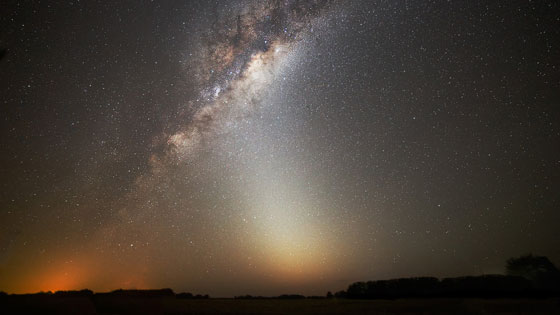
A beautiful, triangle-shaped glow of cosmic light appears in the eastern sky before sunrise for two weeks, from late September through mid-October for those of you who live in mid-northern latitudes (e.g., most of the US, southern Europe, Japan, northern China). Called the “zodiacal light” (as the triangle of light extends from the sun along the constellations of the zodiac), this wondrous apparition can be viewed only if you are in a dark location, far away from bright, city lights. The zodiacal light will appear slightly dimmer than the Milky Way, and will rise up through the zodiacal constellations Leo, Cancer and Gemini.
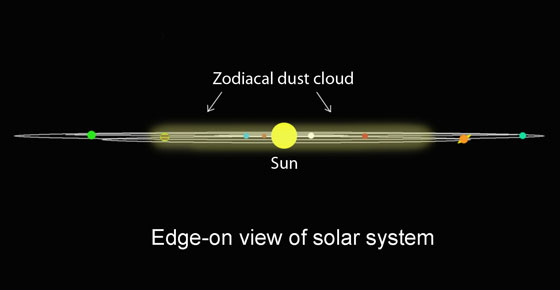
Zodiacal light is caused by the reflection of sunlight off of dust particles in the plane of the solar system. It’s viewable during the spring and summer of each year. Quoting NASA, “Zodiacal light is so bright this time of year because the dust band is oriented nearly vertical at sunrise, so that the thick air near the horizon does not block out relatively bright reflecting dust. Zodiacal light is also bright for people in Earth’s northern hemisphere in March and April just after sunset.”
Did you know you can use the Moon to find constellations in the night sky? Follow us on Twitter where we post information each day about what constellation (area of the night sky) the Moon is in that evening.
Name A Star Live offers some really good tools to learn about the night sky and find your star’s constellation. Visit our website to learn about our Virtual Planetarium software, planisphere constellation finder, and First Light Astronomy Kit!
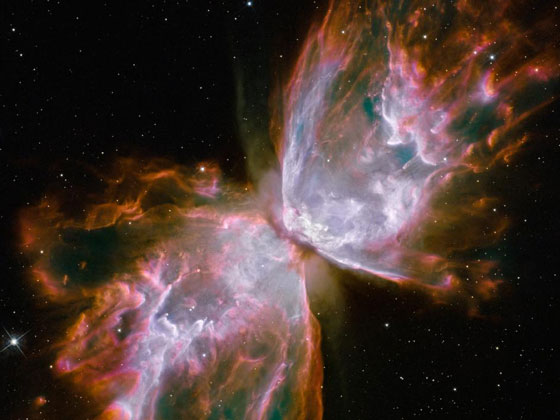
The bright clusters and nebulae of planet Earth’s night sky are often named for flowers or insects. Though its wingspan covers over 3 light-years, the Butterfly Nebula (a.k.a. NGC 6302) in the constellation Scorpius is no exception. With an estimated surface temperature of about 250,000 degrees C, the dying central star of this particular planetary nebula has become exceptionally hot, shining brightly in ultraviolet light but hidden from direct view by a dense torus of dust.
Cutting across a bright cavity of ionized gas, the dust torus surrounding the central star is near the center of this view, almost edge-on to the line-of-sight. Molecular hydrogen has been detected in the hot star’s dusty cosmic shroud. The Butterfly Nebula lies about 4,000 light-years away in the arachnologically correct constellation of the Scorpion (Scorpius).
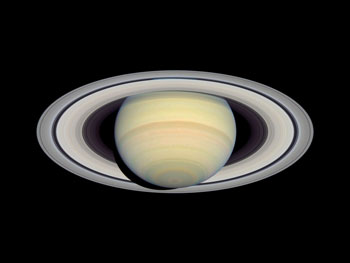
While you need the Hubble Space Telescope to get such a spectacular view of an object like this in Scorpius, there are other neat things you can see in Scorpius with an amateur telescope or just a plain pair of binoculars.
The beautiful, ringed planet Saturn and the red planet Mars are both just to the east of the prominent, summertime constellation Scorpius. If you live in the northern hemisphere of Earth, look for Scorpius toward the south-southwest after sunset. Its brightest stars outline a large “J” in the night sky. Mars, Saturn and Scorpius’ bright, red star Antares form a triangle in the night sky.
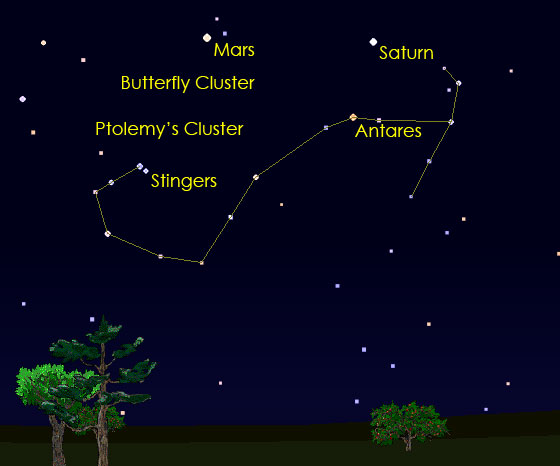
While you need a telescope in order to get a good view of Mars and Saturn, with a simple pair of binoculars you can see two famous, open clusters of stars. Look for the two “stinger” stars at the tail end of Scorpius. Draw an imaginary line through them and extend the line eastward to Ptolemy’s Cluster (a.k.a. “M7”). M7 is about 800 light-years from Earth. In other words, the light you’ll see from this star cluster was generated 800 years ago! Just up and somewhat westward from Ptolemy’s Cluster is the Butterfly Cluster (a.k.a. “M6”), which is about 1,600 light-years from Earth. You should be able to see both M6 and M7 simultaneously through a pair of binoculars.
BTW, don’t confuse the Butterfly Cluster of star with the Butterfly Nebula. While they’re both in Scorpius, they are located in entirely different areas of the constellation.
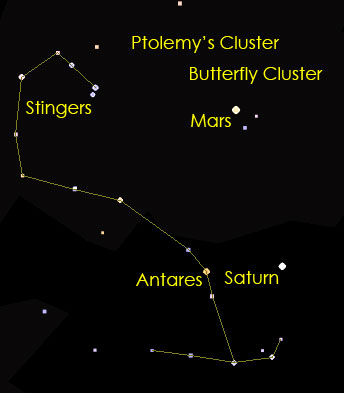
If You’re in the Southern Hemisphere
If you’re in the southern hemisphere of Earth look for Scorpius high in the sky after sunset. The brighter stars of the constellation will form an upside-down letter “J”. Because Mars and Saturn will be much higher in the sky, you should get a better view of those two planets than observers in the northern hemisphere.

The Harvest Moon in the northern hemisphere occurs Friday, September 16. The Harvest Moon is defined as the full Moon closest to the autumnal equinox. Full Moon occurs at 3:05 pm EDT (7:05 pm GMT) September 16. So grab your scythe, get out there and harvest the crops! If nothing else, take a peek at the beautiful full Moon tonight!
Did you know you can use the Moon to find constellations in the night sky? Follow us on Twitter where we post information each day about what constellation (area of the night sky) the Moon is in that evening.
Name A Star Live offers some really good tools to learn about the night sky and find your star’s constellation. Visit our website to learn about our Virtual Planetarium software, planisphere constellation finder, and First Light Astronomy Kit!